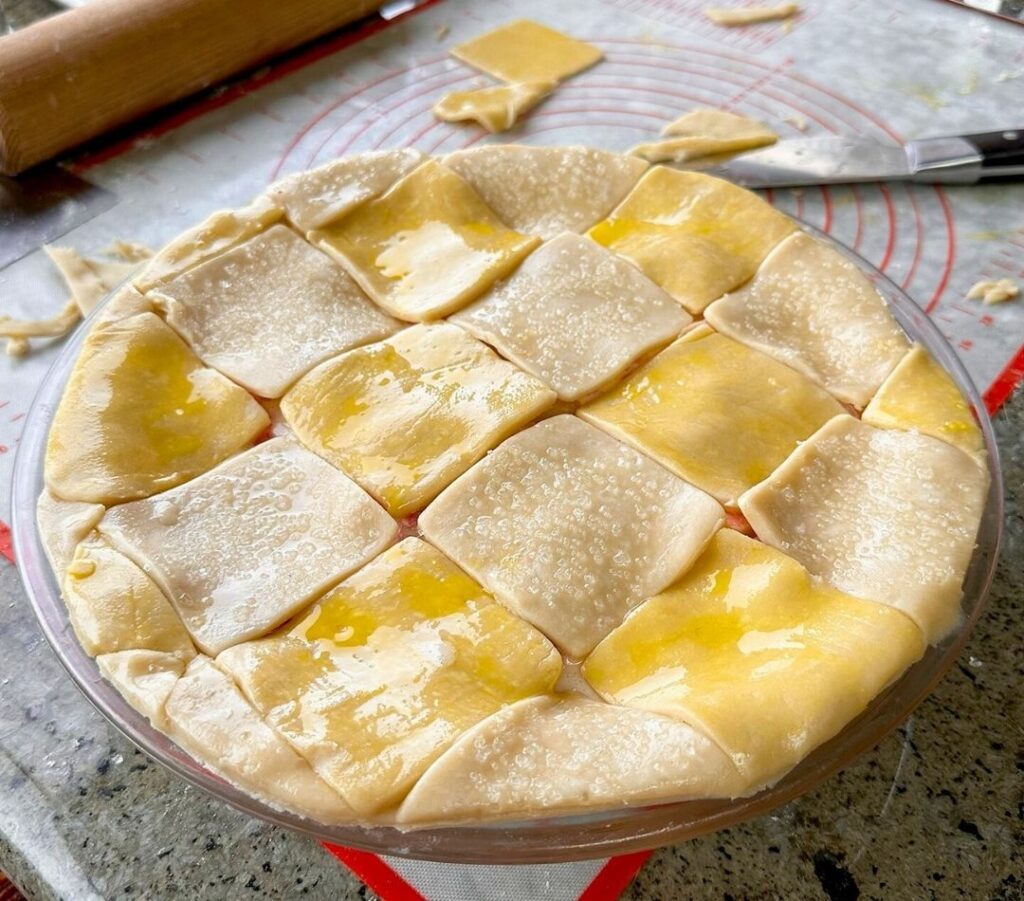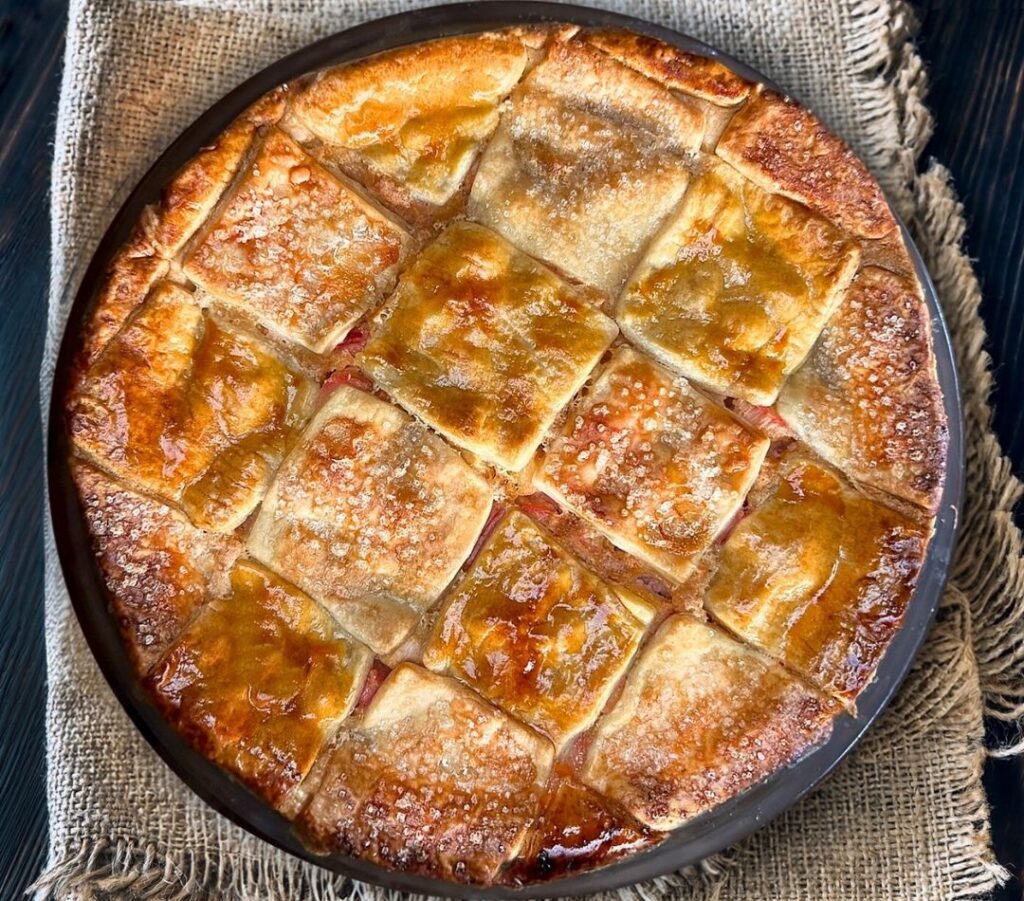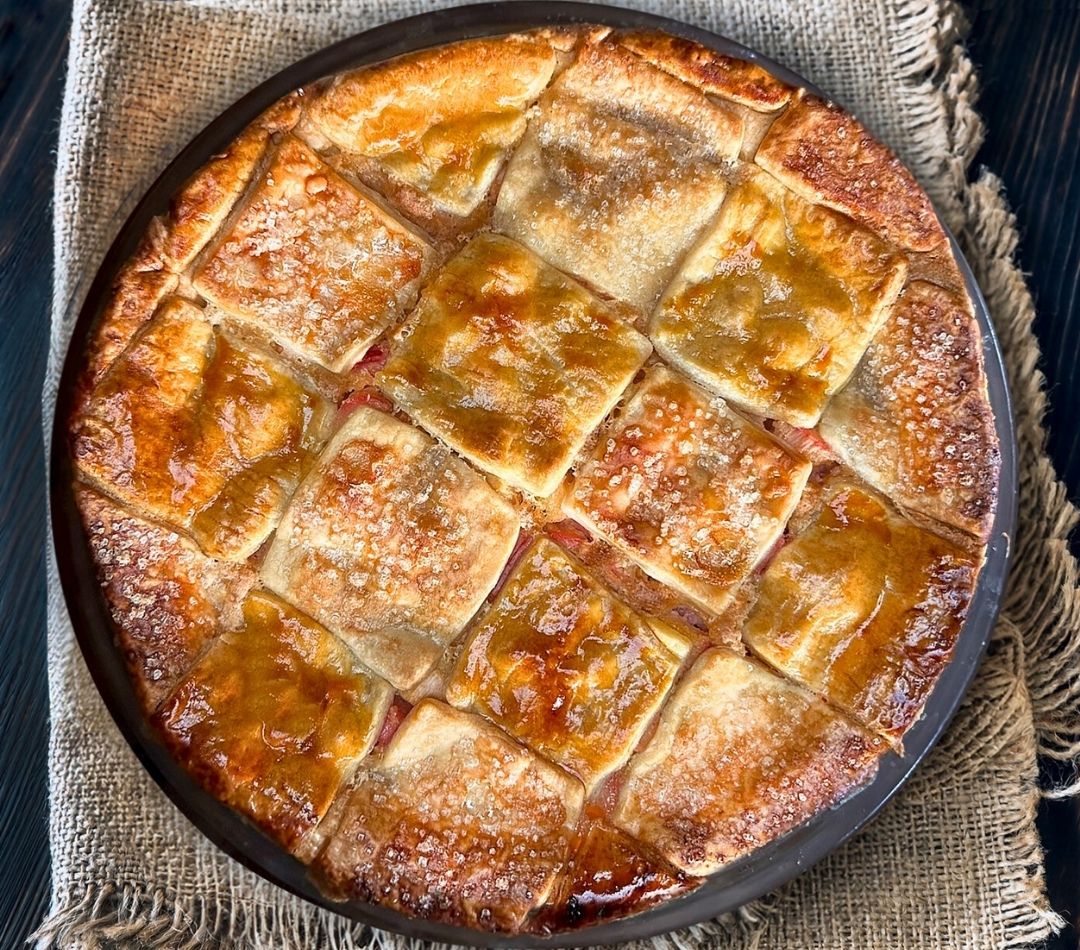Many fruit pies are either too sweet or too tart, often losing the natural character of the ingredients in the process. Not this one. This rhubarb custard pie strikes a rare and satisfying balance: the tangy sharpness of fresh rhubarb melts into a silky, rich custard base, all encased in a flaky, golden pastry shell. The simple lattice crust on top gives it a rustic, farmhouse finish—charming on any table, whether you’re hosting or just treating yourself.
It’s a nostalgic dessert, the kind that shows up at family gatherings, spring picnics, and vintage cookbooks. But it’s also surprisingly straightforward to make from scratch. If you’ve never baked with rhubarb before, this is a perfect introduction: just a few ingredients, minimal prep, and major reward.
Ingredients Matter: Choosing the Right Rhubarb

Fresh rhubarb is the soul of this pie. Ideally, use vibrant red stalks, which tend to be a bit milder and less fibrous than their greener counterparts. Look for firm, crisp stalks—wilted or soft ones may be too mature or dry. If you’re buying ahead of time, store the rhubarb in the fridge wrapped in a damp towel, where it’ll keep for several days.
Frozen rhubarb is also fine if you’re baking out of season. Just thaw it completely and drain off any excess liquid before adding it to the custard mixture, or the pie will come out watery.
The Role of Custard: A Smooth, Creamy Contrast

In this recipe, a simple egg-based custard ties everything together. It softens the rhubarb’s acidity without overpowering it. The eggs provide structure while keeping the texture light, almost soufflé-like once baked. Unlike some fruit pies that rely on cornstarch or gelatin, this one uses flour as a thickener—an old-school technique that results in a firmer, sliceable filling.
Pastry Basics: Flaky, Buttery, and Homemade
For best results, make your own pie crust. A homemade crust has more flavor and holds up better against the juicy filling. You’ll need enough dough for a bottom crust and a lattice top. If you’re in a rush, a high-quality store-bought crust will still yield a decent result, but the homemade version makes the pie truly memorable.
Keep the dough cold while rolling it out, and don’t skip the step of fluting or sealing the edges after laying the lattice. This helps prevent leaks and gives the pie that polished look.
Building the Filling: Simplicity Is Key

Start by combining sugar, all-purpose flour, and a pinch of nutmeg. The nutmeg adds subtle warmth without stealing the show. Once these dry ingredients are mixed, stir them into the lightly beaten eggs until smooth. Then gently fold in the chopped rhubarb. The goal is to coat each piece evenly without breaking them down too much.
Note: You don’t need to pre-cook the rhubarb. It will break down naturally in the oven, releasing just the right amount of juice to flavor the custard.
Assembling the Pie: Step-by-Step

- Roll out your bottom crust and fit it into a 10-inch pie plate. Trim any overhanging dough, leaving about half an inch for fluting.
- Pour the custard-rhubarb mixture into the shell and dot the surface with butter. This adds richness and helps brown the top.
- Roll out the second half of your dough and cut into strips for a classic lattice top. Lay half the strips in one direction, then weave the remaining ones over and under.
- Seal the edges by pinching or fluting the dough, which not only looks good but helps keep everything intact during baking.
Baking Time and Temperature
The pie bakes at 400°F for 50 to 60 minutes. This higher heat ensures the crust crisps up while the custard sets properly. You’ll know it’s done when the filling is bubbling and the lattice is golden brown.
If the crust starts browning too quickly, cover the edges with foil halfway through baking. This protects them from burning while allowing the center to finish cooking.
Cooling and Serving

Let the pie cool completely before slicing. This allows the custard to fully set, making for cleaner slices and better texture. Warm slices can be tempting, but they often fall apart.
Once cooled, the pie can be served as is, or with a spoonful of lightly sweetened whipped cream. The contrast between the cool cream and the tart rhubarb is exceptional.
Storing and Make-Ahead Tips
This pie keeps well at room temperature for a day or two, covered loosely with foil. After that, refrigerate any leftovers. You can also make the crust and prep the filling a day in advance, storing them separately in the fridge. Just assemble and bake when you’re ready.
Freezing the unbaked pie is possible, though best results come from baking it fresh. If you do freeze it, bake from frozen at 375°F, adding 10–15 minutes to the cook time.
Variations and Substitutions

- Spice it up: Add a touch of cinnamon or cardamom for more complexity.
- Lower the sugar: Use 1¼ cups if your rhubarb is already sweet or if you prefer a more tart result.
- Mix fruits: Rhubarb pairs beautifully with strawberries or raspberries. Try substituting 1 cup of rhubarb with berries for a spring twist.
- Use a streusel topping: Instead of lattice, cover the pie with a crumbly oat or almond flour streusel. This adds crunch and saves time.
Why This Pie Works
At its core, this dessert is about balance: tartness from rhubarb, richness from eggs and butter, and a hint of spice. It’s not overly fancy, but it feels special—especially when served at room temperature with a cup of tea or after a summer meal.
It’s also extremely forgiving, making it a great first pie for newer bakers. You don’t need specialized equipment or obscure ingredients. Just a bit of care and attention to detail, and you’ll end up with a pie that delivers both flavor and nostalgia.

Rhubarb Custard Pie
Ingredients
Method
- In a mixing bowl, combine sugar, flour, and nutmeg. Beat the eggs lightly, then stir the sugar mixture into the eggs until fully blended. Fold in the sliced rhubarb, coating evenly.
- Roll out the pie dough and line a 10-inch pie plate with the bottom crust. Pour the rhubarb custard filling into the crust and evenly dot the surface with butter.
- Cut the remaining dough into strips and create a lattice pattern over the filling. Trim and flute the edges to seal the pie.
- Bake in a preheated oven at 400°F (200°C) for 50 to 60 minutes until the custard is set, filling bubbles, and the crust is golden brown. Cover crust edges with foil if browning too quickly.
- Remove from oven and allow to cool completely before slicing. Serve at room temperature, optionally with whipped cream.
Notes
- Use fresh, firm rhubarb stalks for best flavor and texture.
- Allow the pie to cool completely before slicing to ensure the custard sets properly.
- If the crust edges brown too fast, cover with foil midway through baking.
- Optional: Serve with lightly sweetened whipped cream for a creamy contrast.


Leave a Reply